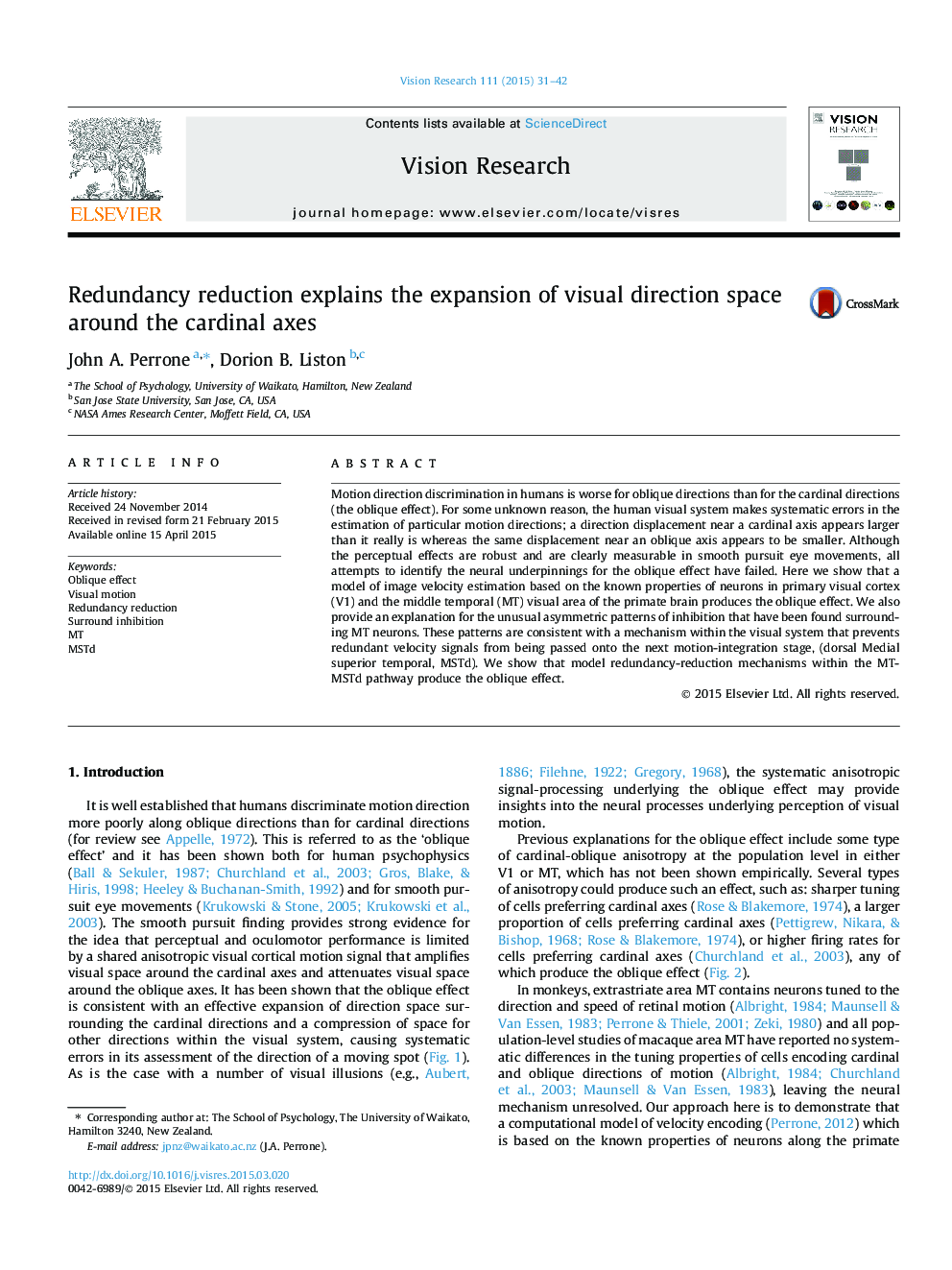| کد مقاله | کد نشریه | سال انتشار | مقاله انگلیسی | نسخه تمام متن |
|---|---|---|---|---|
| 4033563 | 1263356 | 2015 | 12 صفحه PDF | دانلود رایگان |
• Our motion model replicated the human oblique effect (direction misperception).
• The cause of the direction errors was traced to redundancy reduction mechanisms.
• The inhibitory surrounds of primate Middle Temporal (MT/V5) neurons also contribute.
• We show why previous attempts at finding a physiological basis for the OE failed.
Motion direction discrimination in humans is worse for oblique directions than for the cardinal directions (the oblique effect). For some unknown reason, the human visual system makes systematic errors in the estimation of particular motion directions; a direction displacement near a cardinal axis appears larger than it really is whereas the same displacement near an oblique axis appears to be smaller. Although the perceptual effects are robust and are clearly measurable in smooth pursuit eye movements, all attempts to identify the neural underpinnings for the oblique effect have failed. Here we show that a model of image velocity estimation based on the known properties of neurons in primary visual cortex (V1) and the middle temporal (MT) visual area of the primate brain produces the oblique effect. We also provide an explanation for the unusual asymmetric patterns of inhibition that have been found surrounding MT neurons. These patterns are consistent with a mechanism within the visual system that prevents redundant velocity signals from being passed onto the next motion-integration stage, (dorsal Medial superior temporal, MSTd). We show that model redundancy-reduction mechanisms within the MT-MSTd pathway produce the oblique effect.
Journal: Vision Research - Volume 111, Part A, June 2015, Pages 31–42
